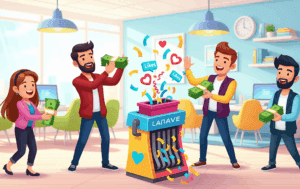If there’s one lesson I’ve learned from years in E-Commerce and digital strategy, it’s that today’s customers don’t just want options—they want consistency. They expect to move between your website, social channels, marketplaces, and even your physical store without friction or confusion. That’s why I’ve come to rely on the principles of Harmonized Commerce. For me, this approach is about more than just “being everywhere”—it’s about tying everything together so each customer interaction feels seamless and intentional.
What Exactly Is Harmonized Commerce?
You’ve probably heard the terms omnichannel, cross-channel, or multi-channel thrown around. While they all capture pieces of the puzzle, Harmonized Commerce is the term I use to describe a truly unified system—where digital and physical channels, internal data, and customer communications are all working together in real time.
I think of it like conducting an orchestra: every channel (your online shop, Amazon listings, Instagram feed, support center, and retail locations) is an instrument. When they’re playing from the same sheet music—sharing inventory, customer data, and messaging—you create a symphony rather than a jumble of noise.
Why It Matters (And Where Businesses Get Stuck)
I’ve seen firsthand how disconnected systems can frustrate both customers and teams. Maybe you’ve experienced this too: a customer sees something on your site, tries to buy it in-store, and it’s not available—inventory wasn’t updated. Or perhaps your social promotions don’t match what’s on your marketplace listings, creating confusion and a lack of trust.
These gaps aren’t just inconvenient; they can cost you sales and erode your brand reputation. Harmonized Commerce addresses this by making sure every touchpoint is connected. The result is a customer who feels seen and valued—no matter where or how they interact with your brand.
How I’ve Approached Harmonized Commerce (And What You Might Consider)
Over the years, I’ve learned that a harmonized strategy isn’t about adopting every platform, but about making the ones you use work together. Here are a few recommendations, based on what’s worked for me and my clients:
- Start With Integration
Ask yourself: Are your key systems (like ERP, CRM, POS, and E-Commerce platforms) talking to each other? When I began focusing on integration first, I noticed fewer errors, less manual work, and happier customers. Real-time syncing of inventory, orders, and customer data is essential. - Make the Customer Journey Consistent
Review your messaging, visuals, and support standards across channels. I’ve found that even small inconsistencies can undermine trust. A simple audit—walking through the customer journey as if you were a shopper—can reveal gaps you might otherwise miss. - Use Data as a Guide
It’s easy to get overwhelmed by raw data. I recommend focusing on actionable insights: Where are customers dropping off? Which products are returned most often, and why? The more you can unify your analytics across channels, the clearer your next steps become. - Assign Roles to Each Channel
Not every channel needs to do everything. For example, I use my website for personalization and storytelling, while marketplaces offer convenience and reach. Social media is my brand’s conversation space. Think about how each channel can play to its strengths, while reinforcing the overall customer experience. - Keep Testing and Adapting
Consumer preferences evolve quickly. I’ve had success with A/B testing different approaches and gathering regular feedback, then adjusting strategies as needed. Don’t be afraid to experiment, as long as you keep your systems integrated and your brand message consistent.
What’s the Payoff?
When you get harmonization right, the difference is tangible. I’ve seen businesses reduce manual errors, speed up order processing, and—most importantly—build real loyalty with customers who feel recognized every step of the way. It’s not a one-and-done project, but an ongoing process of refinement.
Some Questions to Reflect On
- Where do your customers experience the most friction right now?
- Are there manual processes that could be automated or integrated?
- Does your team have access to the same real-time data across departments?
- How consistent is your brand voice and experience across different channels?
Final Thoughts
Harmonized Commerce isn’t just a buzzword; it’s a mindset shift. It asks us to move beyond silos and start thinking about our businesses as unified ecosystems, where every system and every team member works toward the same goal: delivering a connected, consistent experience for the customer.
If you’re considering this approach, my advice is to start small—pick one integration or process to harmonize, and build from there. You don’t need to do it all at once, but every step you take will bring you closer to a more seamless, resilient, and customer-centric business.





